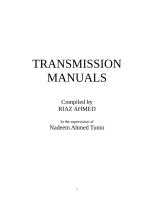• Several types
of cable are commonly used with LANs.
• In some cases,
a network will utilize only one type of cable, other networks will use a
variety of cable types.
-Types of Cables
• Unshielded Twisted Pair (UTP) Cable
• Shielded Twisted Pair (STP) Cable
• Co-axial Cable
• Fiber Optic Cable
1)
Unshielded Twisted Pair
(UTP) Cable
- The cable has four pairs of wires inside the jacket. Each pair is twisted with a different number of twists per inch to help eliminate interference from adjacent pairs and other electrical devices.


Catagories
Types
|
Use
|
Category 1
|
Voice (Wayer Telefon)
|
Category 2
|
Data to 4 Mbps
(LocalTalk)
|
Category 3
|
Data to 10 Mbps (Ethernet)
|
Category 4
|
Data to 20 Mbps (16 Mbps Token Ring)
|
Category 5
|
Data to 100 Mbps (Fast Ethernet
|
- The standard connector for unshielded twisted pair cabling is an RJ-45 connector

- A disadvantage of UTP cable is that it may be susceptible to radio and electrical frequency interference.
2)
Shielded Twisted Pair
(STP) Cable


- -
STP is
a type of cable consists of two individual wires wrapped in a foil shielding to
help provide a more reliable data communication.
• Suitable for
environments with electrical interference;
• However, the
extra shielding can make the cables quite bulky.
• Often used on
networks using Token Ring topology.
3)
Co-axial Cable


- Coaxial cabling has a single copper conductor at its center.
- A plastic layer provides insulation between the center conductor and a braided metal shield
- The metal shield helps to block any outside interference from fluorescent lights, motors, and other computers.
-Coaxial Cable
Connectors
• The most
common type of connector used with coaxial cables is the
Bayonet-Neill-Concelman (BNC) connector
• Different types
of adapters are available for BNC connectors, including a T-connector, barrel
connector, and terminator.


4)
FIBRE
OPTICS

• consists of a
center glass core surrounded by several layers of protective materials
• It transmits
light rather than electronic signals eliminating the problem of electrical interference.
• Ideal for certain
environments that contain a large amount of electrical interference
• Able to transmit
signals over much longer distances than coaxial and twisted pair.
Summary of:
Ethernet Cabling
Specification
|
Cable Type
|
Maximum
length
|
10BaseT
|
Unshielded Twisted Pair
|
100 meters
|
10Base2
|
Thin Coaxial
|
185 meters
|
10Base5
|
Thick Coaxial
|
500 meters
|
10BaseF
|
Fiber Optic
|
2000 meters
|
Cable Topology
Physical Topology
|
Cable
|
Protocol
|
Linear Bus
|
Coax
Twisted Pair
Fiber
|
Ethernet
LocalTalk
|
Star
|
Twisted Pair
Fiber
|
Ethernet
LocalTalk
|
Star-Wired Ring
|
Twisted
Pair
|
Token Ring
|
Tree
|
Coax
Twisted Pair
Fiber
|
Ethernet
|
Network
Operating System (NOS)
·
Software that controls a network and its
message (e.g. packet) traffic and queues, controls access by multiple users to
network resources such as files, and provides for certain administrative
functions, including security.
·
coordinate the activities of multiple
computers
·
Across a network.
·
Acts as a director to keep the network
running smoothly.
·
A NOS is not the same as the networking
tools provided by some existing OSs, Windows XP for instance.
·
An NOS is an OS that has been
specifically written to keep networks running at optimal performance.
·
Some popular NOSs include:
o
Windows NT , IBM AIX, Sun Solaris,
Windows 2000 Server, Windows Server 2003,Inferno Novell NetWare, Red Hat Linux,
BSD.
·
There are two major types of network
operating system:
1.
Peer-to-Peer
2.
Client/Server
1)
Peer- to-Peer
• In a peer-to-peer
network, all computers are considered equal; they all have the same abilities to
use the resources available on the network
• Allow users to
share resources and files located on their computers and to access shared resources
found on other computers.
• Do not have a
file server or a centralized management source
• Designed
primarily for small to medium local area networks.
• AppleShare and
Windows for Workgroups are examples of programs that can function as peer-to-peer
network operating systems.
Advantages
•
Less initial expense - No need for a dedicated server.
•
Setup - An operating system such as Windows XP/…) already in place may only need
to be reconfigured for peer-to-peer operations.
Disadvantages
•
Decentralized - No central repository for files and applications.
•
Security - Does not provide the security available on a client/server network.
2)
Client/Server
o
Allow the network to centralize
functions and applications in one or more dedicated file servers
o
The file servers become the heart of the
system, providing access to resources and providing security.
o
Individual workstations (clients) have
access to the resources available on the file servers.
o
Novell Netware and Windows 2000 Server
are examples of client/server network operating systems.
